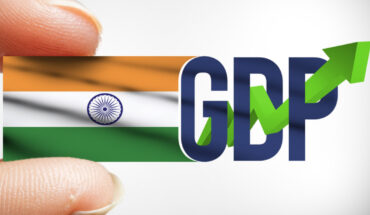Pulapre Balakrishnan explains how placing agricultural production on a steady footing will help economy
Inflation is back as a talking point in the public arena, some would say belatedly, for wholesale price inflation has been in the double digits for over 12 months. India’s official measure of inflation, the rate of change of the consumer price index, has now breached the Reserve Bank of India (RBI)’s upper target of 6% for three months continuously. At the conclusion of the April meeting, the Monetary Policy Committee had already warned that the focus will henceforth be on inflation. Yesterday it raised the repo rate somewhat sooner than was expected by the market.
It may appear contradictory to ask whether the RBI’s stated policy of ‘inflation targeting’, implemented through changes in the interest rate, can control inflation, but we show here why that would be justified.
The discourse on inflation engaged in by the western central banks, which has been adopted in toto by their Indian counterpart, is so abstruse that it is not understood even by many economists. So, we begin with an explainer.
The starting point of this discourse is that inflation reflects an excess of output over its ‘natural’ level. Inflation targeting refers to the policy of controlling inflation by raising the interest rate over which the central bank has control, i.e. the rate at which it lends to commercial banks, the so-called ‘repo rate’. This, it is argued, will induce firms to stay their investment plans and reduce inventories, lowering production. As economy-wide output declines, becoming equal to the natural level of output, inflation will cease. This story does not just legitimise a policy of output contraction for inflation but sees it as optimal. The natural level of output itself is the productive counterpart of the natural level of employment, the level that obtains in a freely functioning labour market. So, at the natural level of output, the economy is deemed to be at full employment.
It is left unstated, but salient in the context, that the natural level of output is unobservable. Hence inflation as a reflection of an “overheating” economy is something that must be taken on trust. Surely it is disturbing that India’s official model of inflation control is based on so unscientific a foundation. At least, the view of inflation that had ruled the central banks of the west before they adopted inflation targeting was based on something tangible, namely, the growth of the money supply.
Not surprisingly for a theory based on an unobservable variable, the proposition that inflation is due to an overheating economy fares poorly when put to a statistical test for India. We are not aware of a single demonstration of the empirical validity of the model of inflation presented in the RBI report of 2014, which recommended a move to inflation targeting. On the other hand, in our published research, we explain inflation in India in terms of the movement of the prices of agricultural goods and, to a lesser extent, imported oil. The implication of this finding is damaging for the claim that monetary policy can control inflation, for neither the price of agricultural goods nor that of imported oil is under the central bank’s control. The only route by which monetary policy can, in principle, control inflation is by curbing the growth of non-agricultural output, which would in turn lower the growth of demand for agricultural goods. As the demand for agricultural goods slows, so will inflation, but this comes at the cost of output and employment. At least, this is the theory. Whether this takes place in practice depends upon the extent to which changes in the repo rate are transmitted to commercial bank lending rates.
Agricultural goods prices
The implication for the policymaker that inflation is driven by agricultural goods prices, as is the case in India presently, is that the focus should be on increasing the supply of these goods. This could be a win-win solution, for as agricultural production grows faster, the economy expands without inflation. Ideally, food prices should decline, for the consequent rise in demand for other goods will propel the economy forward. But the product mix of agriculture becomes relevant here. Growing per capita income in India has shifted the average consumption basket towards foods rich in minerals, such as fruits and vegetables, and protein, such as milk and meat. But the expansion of the supply of these foods has been lower than the growth in demand for them. So a concerted drive to increase the supply of food other than rice and wheat holds the key. There was a time when the leadership of the RBI understood this, but now its leadership appears unwilling to acknowledge native wisdom.
Increasing agricultural supply at steady if not declining prices is not going to be easy for political reasons. The States have not shown themselves to be particularly sensitive to the charge that they do little to ensure a supply of cheap food for the rest of the country, or even themselves in some cases. When they do produce surpluses, their only concern is that these be procured by the central government at the highest price. The stances of the leaders of wheat-producing northern States and rice-producing southern ones reflect this. Under these circumstances, a nation-wide project for producing food cheaply remains a distant dream. Now that the farm laws have been repealed, it is the time to initiate a discussion on how such a project can be taken forward. Costly food threatens the health of the population, as people economise on their food intake, and holds back the economy, as only a small part of a household’s budget can be spent on non-agricultural goods.
Monetary policy manouvres, typified by the RBI’s raising of the repo rate yesterday, is not an efficient solution for an agricultural price-driven inflation. Any lasting inflation control would require placing agricultural production on a steady footing, with continuously rising productivity. This would require a re-orientation of farm policy. Since the time of the Green Revolution, the focus has been on raising output, that too of the superior cereals. The inflation caused by continuously raising procurement prices for these crops and slow growth elsewhere in the food-producing sector has been swept under the carpet. The time has come to end this folly. Till then, inflation targeting by a committee accountable to no one will remain a charade.
Pulapre Balakrishnan is at Ashoka University, Sonipat and M. Parameswaran is at the Centre for Development Studies, Thiruvananthapuram. Views are personal




